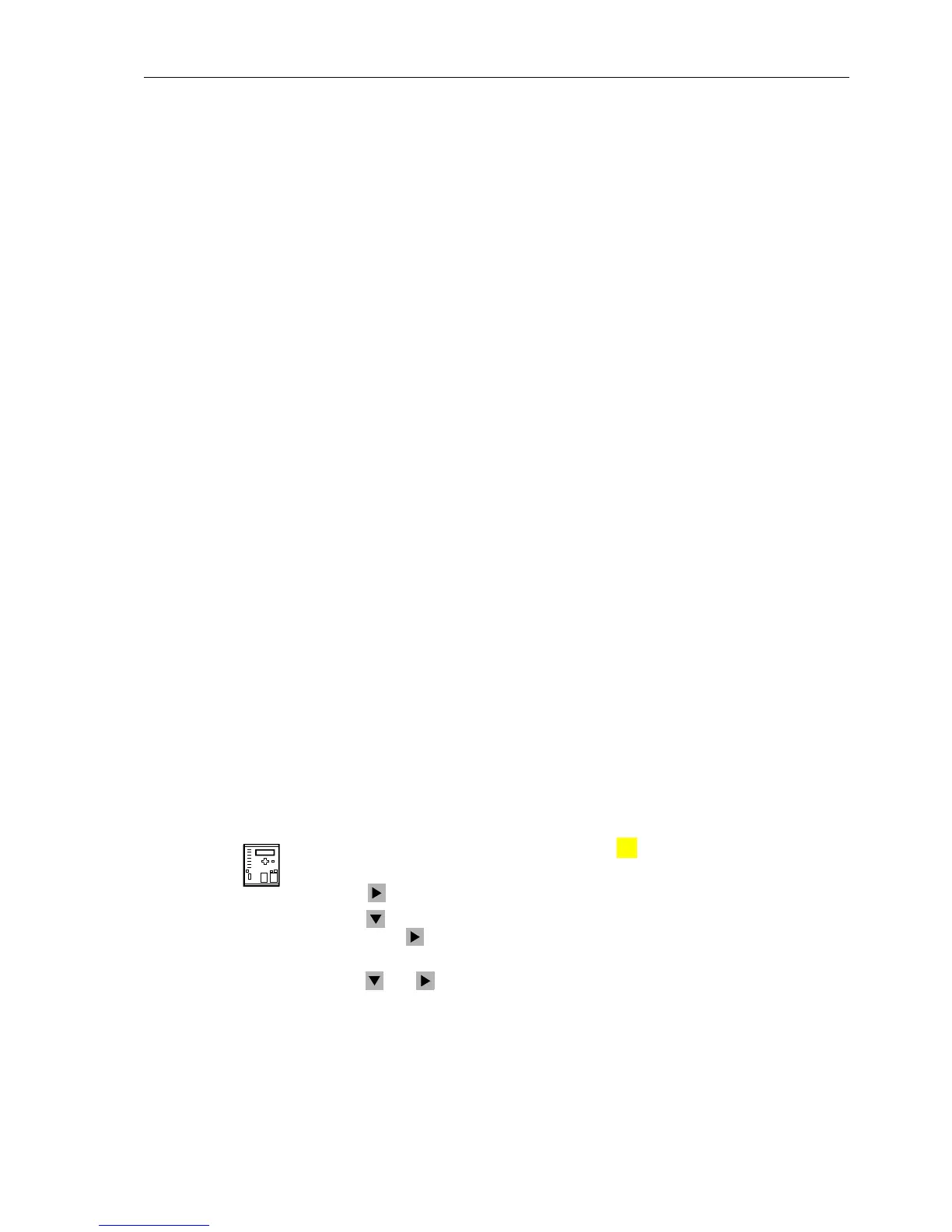Control During Operation
7-77SA6 Manual
C53000-G1176-C156-2
Options for
Fault Location
Especially for the fault location there are, except for the display options in the device
display and in DIGSI
®
4, further display options. Their availability depends on the de-
vice version, the configuration (Section 5.1) and the routing (Section 5.2):
• If the device is provided with an BCD output for fault location, the corresponding bi-
nary outputs are allocated and transmitted to a suited display panel with BCD de-
coder, the fault location is indicated in per cent (the line length) and can be read out
immediately after the fault ocurred. The numbers have the following significance:
0 to 195 the calculated fault location in % (line length). If the number exceeds
the 100 % rate, the fault is located outside the protected line in
forward direction;
197 a negative fault location was calculated (the fault is not located in the
protected line, but in reverse direction);
199 overflow (the calculated value is higher than the maximum value (195 %)
thatcanbetransmitted).
• If the device is provided with at least one analog output (0...20 mA) and the fault
location is output via the latter and then transmitted to a suited display panel, the
fault distance can be read out immediately after a fault ocurred.
For each case please take into consideration that the calculated fault distance only re-
fers to faults in protected lines, in homogeneous lines. In different cases the result may
be falsified considerably, e.g. from intermediate infeed.
Retrieved
messages
The messages for the last eight network faults can be retrieved. The definition of a net-
work fault is such that the time period from fault detection up to final clearing of the
system fault is considered to be one network fault. If auto-reclosure occurs, then the
network fault ends after the last reclosing shot, which means after a successful or final-
unsuccessful reclosing. Therefore, the entire clearing process, including the reclosing
attempt (or all reclosing attempts), occupies only one trip log buffer. Within a network
fault, several fault events can occur (from the first pick-up of a protective function to
the last drop-out of a protective function). Without auto-reclosing, every fault event is
a network fault.
Altogether up to 600 indications can be stored. Oldest data are erased for newest data
when the buffer is full.
All available indications are displayed and explained in the Appendix. In a specific
case, of course, only the applicable messages appear on the display.
From the
DeviceFront
With a device ready for operation, first press the key. The MAIN MENU appears.
The first menu item (
Annunciation) is marked.
Press the key to enter the
ANNUNCIATION sub-menu (see Figure 7-1).
Using the key, select the sub-menu item
Trip Log andmovetotheTripLogsub-
menu using the key. The
TRIP LOG selection appears.
In this sub-menu, the indications for the last 8 network faults can be selected, again
using the and keys. See the example in Figure 7-7.
If no messages are present for a fault, then entrance is denied and “
List Empty”is
displayed.
The messages within a fault record are listed in chronological order and numbered,
from the oldest to the newest.
MENU

